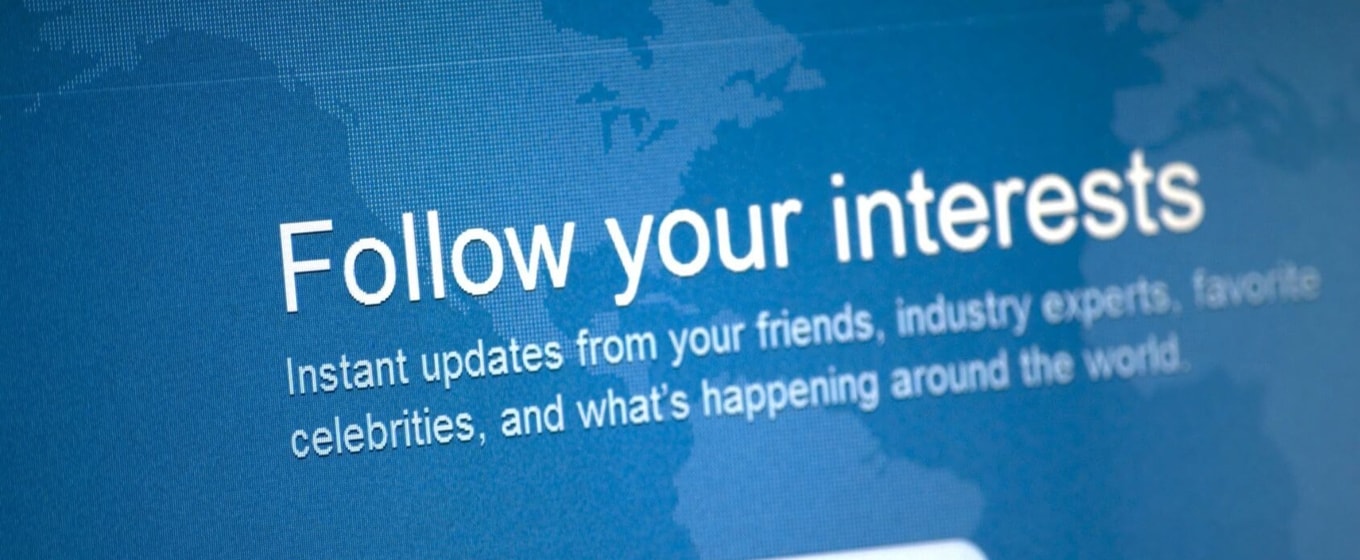Twitter currently has 316 million monthly active users, and claims 15 million of them are in the UK; mostly on mobile, with 500 million Tweets sent globally each day. It’s surely a no-brainer then that no business can ignore this powerful marketing tool.
You’re no doubt aware of this, but the stumbling block you face is how to effectively use a social media tool which only gives you 140 characters at a time to put your message across.
74% - The percentage of people who follow SMEs on Twitter for new product updates Craig Smith, DMR
Firstly, when signing up your business for a Twitter account make sure the description of your company and what it does is noted clearly on the bio/profile, and include a link to your company website (you can edit this information at any stage).
Next you’ve got to have an idea of who you want to follow on Twitter, perhaps suppliers, clients, experts in your field, politicians, or local authorities. Use Twitter search to find them, then start following them. Be prepared to engage with them regularly to improve your presence and reputation.
Also, make sure the staff of your company are on board. Colleagues need to follow you and tweet accordingly for the benefit of their employer.

For the tweeting itself, the first rule is to tweet regularly – daily, if possible. Tweet information relevant to your business, that will be useful to your followers, and encourage re-tweeting (don’t be afraid to ask for a retweet). The best tweets come from combining what your target audience is interested in and information that promotes your company. If you provide people with valuable information and answers to their questions, you will increase awareness of your business and attract new customers.
So how do you craft a riveting tweet? Most experts agree you’ve got to write tweets as though you’re addressing a good friend, even though you’re aiming at clients, colleagues, customers and even competitors. We’ve learned from experience that newsworthy or inspiring subjects work best. Imagine your audience and tweet according to their interests. Ask questions to provoke a response, use hashtags and retweet anything pertinent; this is all vital if you’re going to draw attention. We’d suggest tweets that contain statistics, facts, inspiration, and endorsements. Anything that is likely to hook the reader into sharing and caring. Talk to people, not at them, and be professional with business tweets, but still conversational.
If you’re clueless about hashtags, never fear. This simply means that you can prefix any telling word or phrase in your tweet with the # sign. For example, “#B2BMarketing” will enable your post to be visible to anyone else who has hashtagged that particular phrase, and you will receive similar hashtagged posts in return. If Twitter discovers your particular hashtag is hugely popular, it will appear as a “trending” topic.
Timing your tweets is tricky, so it pays to experiment. Vary the time, but be aware research indicates that weekends and after 5pm are the most lucrative times, even for business tweets.
You’ve started your Twitter campaign, now keep track of its success by logging into your account and consulting Twitter Analytics [http://analytics.twitter.com]. This will allow you to monitor which of your tweets are successful, and spot trends. You can then use this information to decide what kind of tweets to focus






These cookies are set by a range of social media services that we have added to the site to enable you to share our content with your friends and networks. They are capable of tracking your browser across other sites and building up a profile of your interests. This may impact the content and messages you see on other websites you visit.
If you do not allow these cookies you may not be able to use or see these sharing tools.